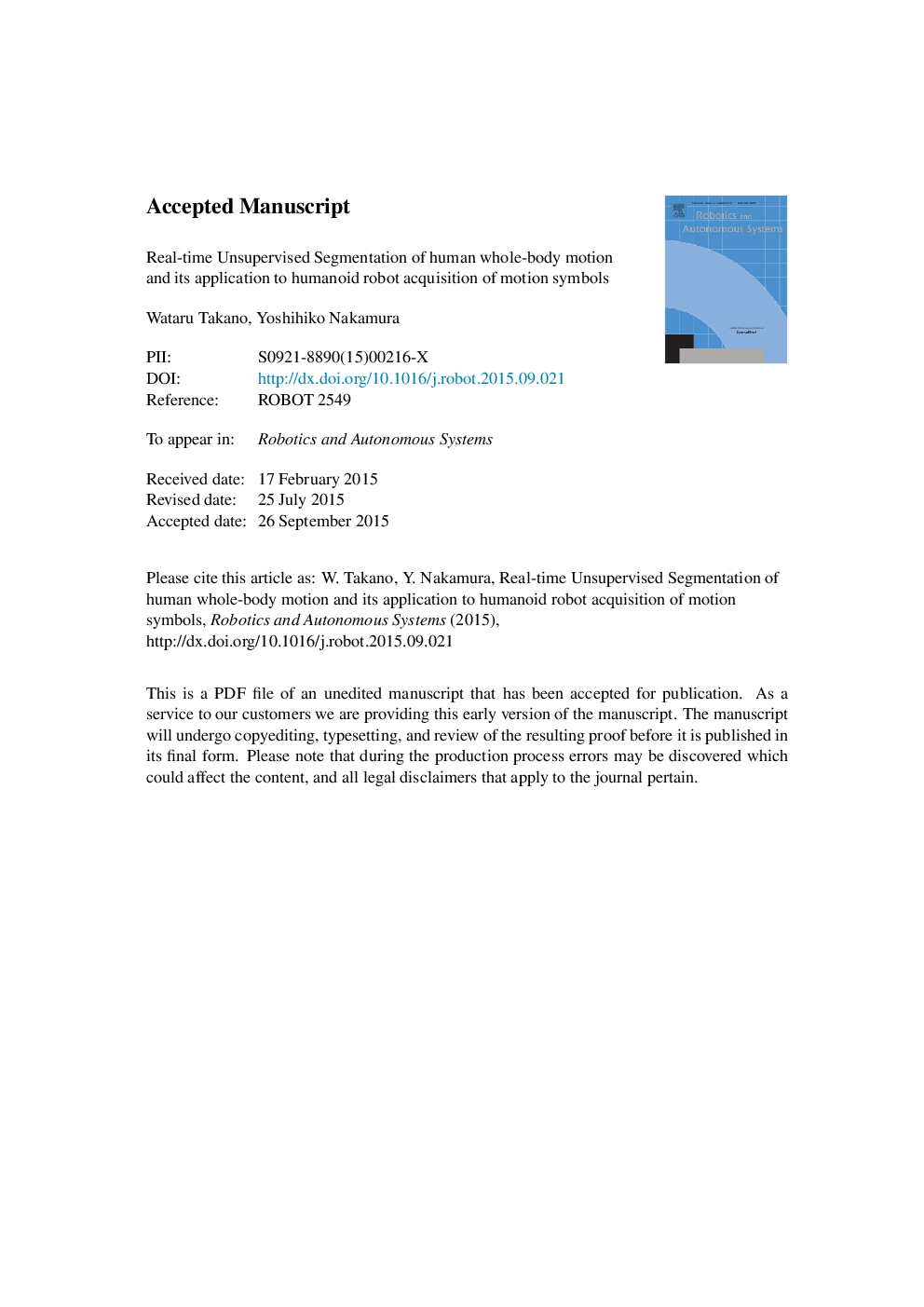| Article ID | Journal | Published Year | Pages | File Type |
|---|---|---|---|---|
| 10326708 | Robotics and Autonomous Systems | 2016 | 31 Pages |
Abstract
An interactive loop between motion recognition and motion generation is a fundamental mechanism for humans and humanoid robots. We have been developing an intelligent framework for motion recognition and generation based on symbolizing motion primitives. The motion primitives are encoded into Hidden Markov Models (HMMs), which we call “motion symbols”. However, to determine the motion primitives to use as training data for the HMMs, this framework requires a manual segmentation of human motions. Essentially, a humanoid robot is expected to participate in daily life and must learn many motion symbols to adapt to various situations. For this use, manual segmentation is cumbersome and impractical for humanoid robots. In this study, we propose a novel approach to segmentation, the Real-time Unsupervised Segmentation (RUS) method, which comprises three phases. In the first phase, short human movements are encoded into feature HMMs. Seamless human motion can be converted to a sequence of these feature HMMs. In the second phase, the causality between the feature HMMs is extracted. The causality data make it possible to predict movement from observation. In the third phase, movements having a large prediction uncertainty are designated as the boundaries of motion primitives. In this way, human whole-body motion can be segmented into a sequence of motion primitives. This paper also describes an application of RUS to AUtonomous Symbolization of motion primitives (AUS). Each derived motion primitive is classified into an HMM for a motion symbol, and parameters of the HMMs are optimized by using the motion primitives as training data in competitive learning. The HMMs are gradually optimized in such a way that the HMMs can abstract similar motion primitives. We tested the RUS and AUS frameworks on captured human whole-body motions and demonstrated the validity of the proposed framework.
Related Topics
Physical Sciences and Engineering
Computer Science
Artificial Intelligence
Authors
Wataru Takano, Yoshihiko Nakamura,
